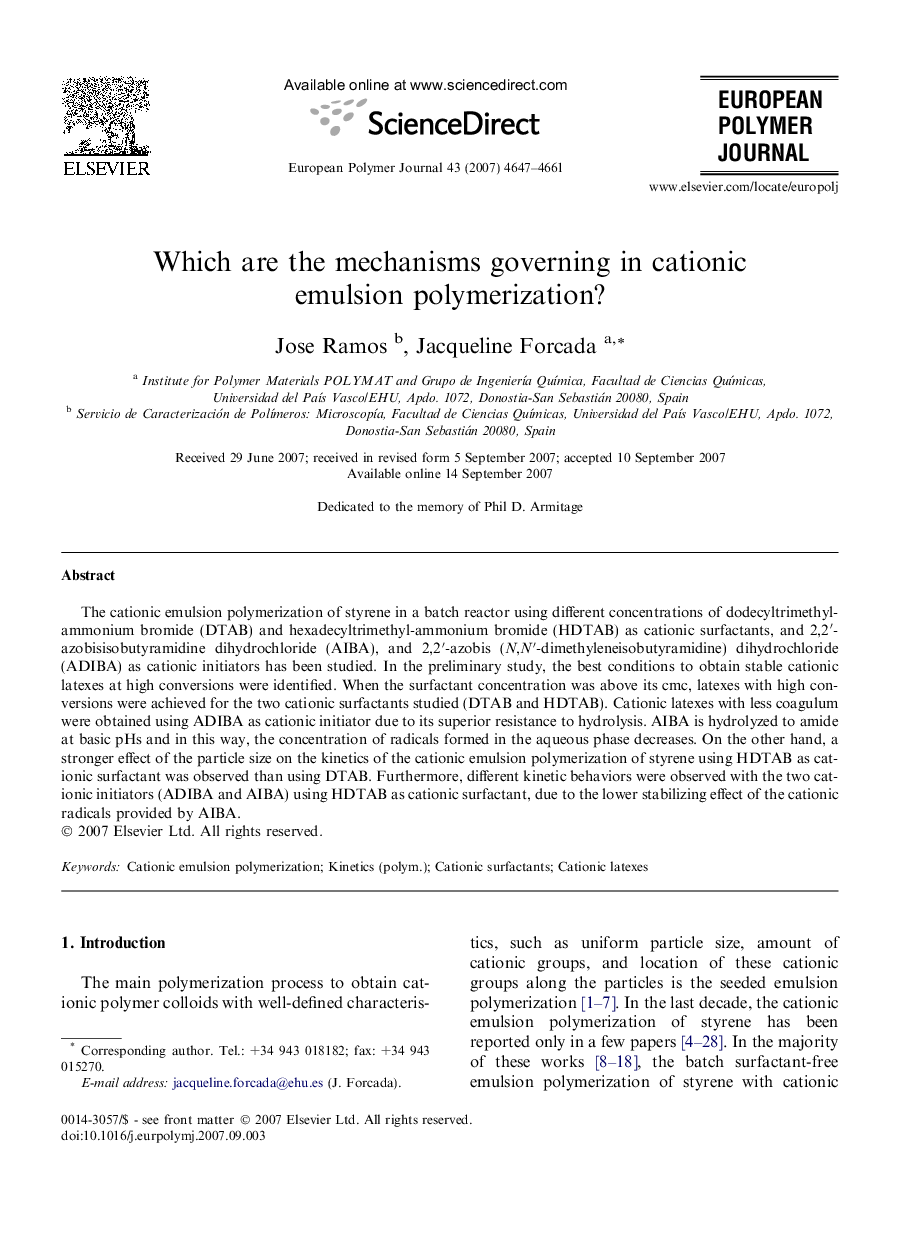| کد مقاله | کد نشریه | سال انتشار | مقاله انگلیسی | نسخه تمام متن |
|---|---|---|---|---|
| 1401160 | 984680 | 2007 | 15 صفحه PDF | دانلود رایگان |

The cationic emulsion polymerization of styrene in a batch reactor using different concentrations of dodecyltrimethylammonium bromide (DTAB) and hexadecyltrimethyl-ammonium bromide (HDTAB) as cationic surfactants, and 2,2′-azobisisobutyramidine dihydrochloride (AIBA), and 2,2′-azobis (N,N′-dimethyleneisobutyramidine) dihydrochloride (ADIBA) as cationic initiators has been studied. In the preliminary study, the best conditions to obtain stable cationic latexes at high conversions were identified. When the surfactant concentration was above its cmc, latexes with high conversions were achieved for the two cationic surfactants studied (DTAB and HDTAB). Cationic latexes with less coagulum were obtained using ADIBA as cationic initiator due to its superior resistance to hydrolysis. AIBA is hydrolyzed to amide at basic pHs and in this way, the concentration of radicals formed in the aqueous phase decreases. On the other hand, a stronger effect of the particle size on the kinetics of the cationic emulsion polymerization of styrene using HDTAB as cationic surfactant was observed than using DTAB. Furthermore, different kinetic behaviors were observed with the two cationic initiators (ADIBA and AIBA) using HDTAB as cationic surfactant, due to the lower stabilizing effect of the cationic radicals provided by AIBA.
Journal: European Polymer Journal - Volume 43, Issue 11, November 2007, Pages 4647–4661